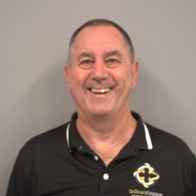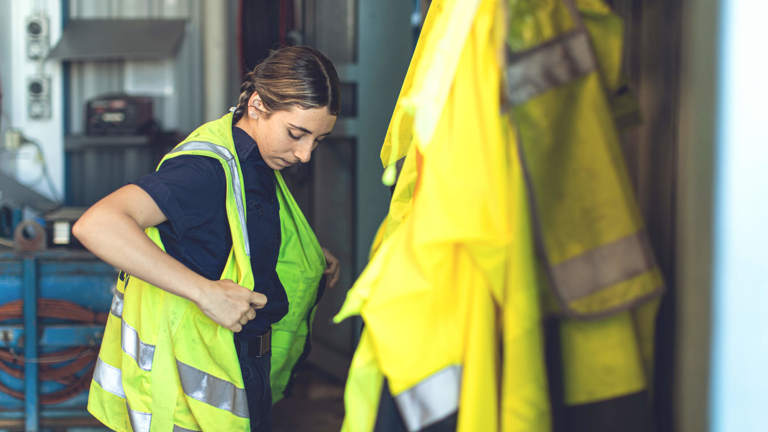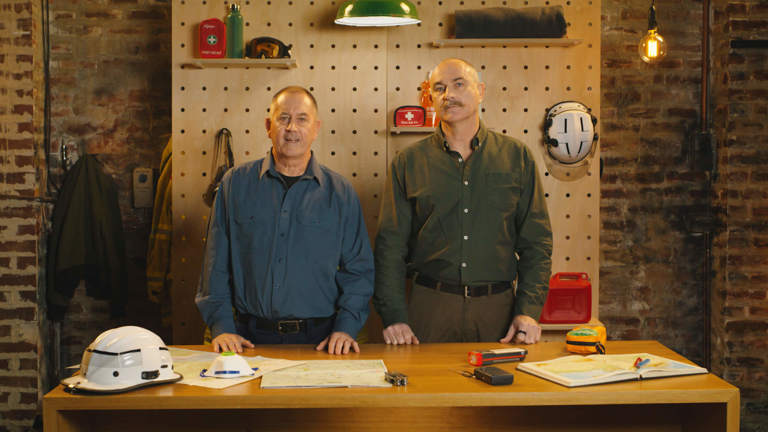Living in one of the most fire-prone places on Earth1 means Australians are familiar with the risks associated with bushfires. We’ve all seen how quickly a bushfire can escalate into a catastrophic event, which is why our experts say a bushfire survival plan is essential for all Aussies – no matter where you live.
Jim Smith, a volunteer firefighter and former Deputy Commissioner for Fire and Rescue NSW, has experienced multiple large-scale bushfire events. He says all bushfire preparation starts with a bushfire survival plan.
“Good planning is the essence of all emergency management,” Jim explains.
“Not having a bushfire survival plan in place can lead to panic, and this is when wrong decisions such as leaving at the wrong time can happen.”
Fortunately, developing a plan is a straightforward process. In this article, we’ve gathered expert advice and tools you can use to help get your plan in order.
What exactly is a bushfire survival plan?
A bushfire survival plan outlines in writing how you’ll respond if you, your family or household members and your home are threatened by a bushfire. According to Jim, plans will generally map out:
- Who you need to protect, including vulnerable family or other household members (such as young children and the elderly), neighbours, pets and livestock and visitors
- When you need to leave – and what will trigger the decision to leave
- Where you’ll go to find shelter, and how you’ll get there
- Who you should notify in case of a bushfire
- What items you need in your bushfire emergency kit
- What to do if circumstances change and you’re unable to leave before a fire arrives.
Having a bushfire survival plan means you’ll have one less thing to think about at a time when emotions may be running high and important decisions may need to be made.
“If you’ve thought about what could go wrong, what you need to do, and what you need to take, that’s just one less thing you’ve got to worry about if a crisis happens.”

“When the bushfire front hits, and you have to do lots of things really quickly, you need capacity to make those complex decisions. And if all the simple decisions have been made, then it’s much easier.”
How to make a bushfire survival plan
With the help of Jim and Mark, we’ve created a bushfire survival plan template.
Download your bushfire survival plan template today.
Download the template
Similar plans are available at government fire authority websites in all states and territories through the links below:
- Australian Capital Territory
- New South Wales
- Northern Territory
- Queensland
- South Australia
- Tasmania
- Victoria
- Western Australia
Jim’s advice is to build out your plan in consultation with your family or others who share your home.
“It’s important that everybody is across the plan – they know what’s in it, and they know where it’s kept. That way, there’s no confusion on the day,” Jim says.
When to make a bushfire survival plan
“One of the most common mistakes people make when it comes to bushfire readiness is that they prepare too late,” Jim says.
Bushfires can occur at any time of year when weather and fuel conditions are suitable, but different parts of Australia have different fire weather seasons, which is when the risk is greater.2 No matter when your local fire weather season is, the message from experts is to be prepared well in advance.
“Download a template today and spend 15 minutes or so doing a bushfire survival plan – it may well save your life and the lives of those you love,” Jim says.
Authorities recommend reviewing your plan annually.3 You may also want to revisit it whenever your circumstances change, such as when you welcome a new pet into your home or when caring for an ill family member.
Plan to leave early
Jim says leaving early is your safest option in any bushfire emergency. Identifying your trigger to leave is critical – Jim notes three potential triggers to consider:
- Leave when there’s a nearby fire that is moving towards you.
- Leave when an Emergency Alert is issued for your area.4
- Leave when a fire danger rating of Extreme or Catastrophic is forecast for the next day.5
“You have a trigger in your plan that clearly says, ‘This is when I’m going to go’. It’s always best to leave early rather than be caught out in the open when a fire comes through,” he says.
“If you have vulnerable people in your household, such as children, the elderly or asthmatics, it’s best to leave the night before. When your trigger is reached, leave straight away and follow the safest of the evacuation routes mapped out in your bushfire survival plan.”
What to put in your bushfire emergency kit
Another key part of a survival plan is having a kit containing essential items you’ll need if you have to evacuate. Pack the items in a waterproof storage container and keep it in a safe place, along with a second list of items to add before you leave. Your bushfire emergency kit might include:6
- A portable battery- or solar-operated radio
- A waterproof torch
- Spare batteries
- A first aid kit with a manual
- Candles with waterproof matches
- Woollen blankets
- Emergency contact numbers
- A waterproof bag for valuables.6
Jim suggests your kit could also include P2 masks and eye protection.
Before you leave, consider adding:
- Cash, ATM cards and credit cards
- Medications, toiletries and sanitary supplies
- Special supplies for infants and the elderly, injured or disabled
- A mobile phone and charger
- Important documents, valuables and photos (in a waterproof bag)
- A change of clothes for everyone
- Drinking water (at least three litres per person per day).6
Don’t forget to include a printout of your bushfire survival plan and let other members of your household – including children – know where your emergency kit is stored.
Remember to prepare for your pets as well. Make sure your pet is wearing an identification tag, and if you’re leaving, take a leash, basket, medication, food and a familiar toy for your animal.6
Use the tool below to help build a downloadable bushfire emergency kit checklist.
What if you can’t leave?
While leaving early is a key part of any bushfire survival plan, Jim advises making a note of what you’ll do if circumstances change – for example, if a fire changes direction, increases intensity or advances faster than forecast – and you’re forced to remain in your home.
“The decision to stay will vary from property to property and family to family,” Jim explains.
“Taking the right steps if you are forced to shelter in place will give you the best chance of survival.”
Find more advice on what to do if you aren’t able to evacuate.
How to talk to children about bushfires
A bushfire emergency can be a stressful time for all members of your household – especially children, who might be particularly frightened and confused about what’s happening.
According to UNICEF, talking to children about what causes bushfires and how we can keep ourselves safe when they occur may help alleviate some of their stress. Involving children in age-appropriate tasks during the planning process can give them a sense of control in the face of the unknown.7
“Depending on their age, a good method to involve children is to give them tasks in preparing your bushfire safety plans; they can be responsible for packing some of the items for your evacuation bag,” suggests Jim.
“You can give them a checklist of preparation activities for them to work through; they can check the list and get back to you with what needs doing or if it is all good.”
For younger kids, Children’s Health Queensland has some free resources online, including storybooks and videos to help children learn about bushfires and other disasters.8
Stay informed about warnings and updates
Once you’ve created your bushfire survival plan, it’s important to stay informed about any approaching threats so you can respond promptly and appropriately to your specific circumstances.
“Some state or territory fire services have apps that will keep you very well informed about when you should be preparing your home for bushfires and when you should be leaving,” Jim says.
“Don’t forget some simple methods of staying aware, such as having a battery- or solar-powered radio, which will keep you informed if you lose power, internet and phone signal.”

Once your bushfire survival plan is complete, you might want to visit our you.prepared emergency content hub, where you’ll find plenty more expert tips to help you get bushfire ready.
Jim Smith & Mark Dobson
With a combined firefighting history of more than 60 years, Jim Smith and Mark Dobson are leading members of Australia’s firefighting community. Their experience encompasses major bushfire events, including the Canberra Bushfires in 2003, Black Saturday in 2009 and the Black Summer fires of 2019-20. The pair now work together in their respective roles as General Manager and Founder of Ordinary Courage, a consultancy dedicated to providing organisations with the tools to sustain good workplace mental health. Youi is proud to partner with Jim and Mark in the creation of this bushfire preparedness content.
The content in this article has been prepared based on current government and emergency services guidelines and expert advice provided at the time of publishing. This information is subject to change. Please be sure to check for the latest information and always consider your personal circumstances regarding bushfire preparedness and response.
Where you have increased your cover or reduced your excess within 72 hours (or other period noted on your policy schedule) of a flood, storm, hail or bushfire occurring, cover will be limited to the amount that was effective prior to the change. Loss, damage or legal liability caused by, resulting or arising from flood, storm, hail or bushfire during the first 72 hours (or other period noted on your policy schedule) of your policy first being purchased is excluded unless certain conditions apply. Refer to the relevant Product Disclosure Statement for full T&Cs.
1 Source: CSIRO – Bushfire tracking with Sentinel Hotspots
2 Source: Bureau of Meteorology – Fire weather seasons
3 Source: Qld Fire Department – Prepare for bushfire season
4 Source: Emergency Alert – Do Not Block +61 444 444 444
5 Source: Australian Fire Danger Rating System – Know the Changes. They could save your life
6 Source: NSW Rural Fire Service – Emergency survival kit
7 Source: UNICEF Australia – How to talk to children about natural disasters
8 Source: Children’s Health Queensland – Birdie and the fire










